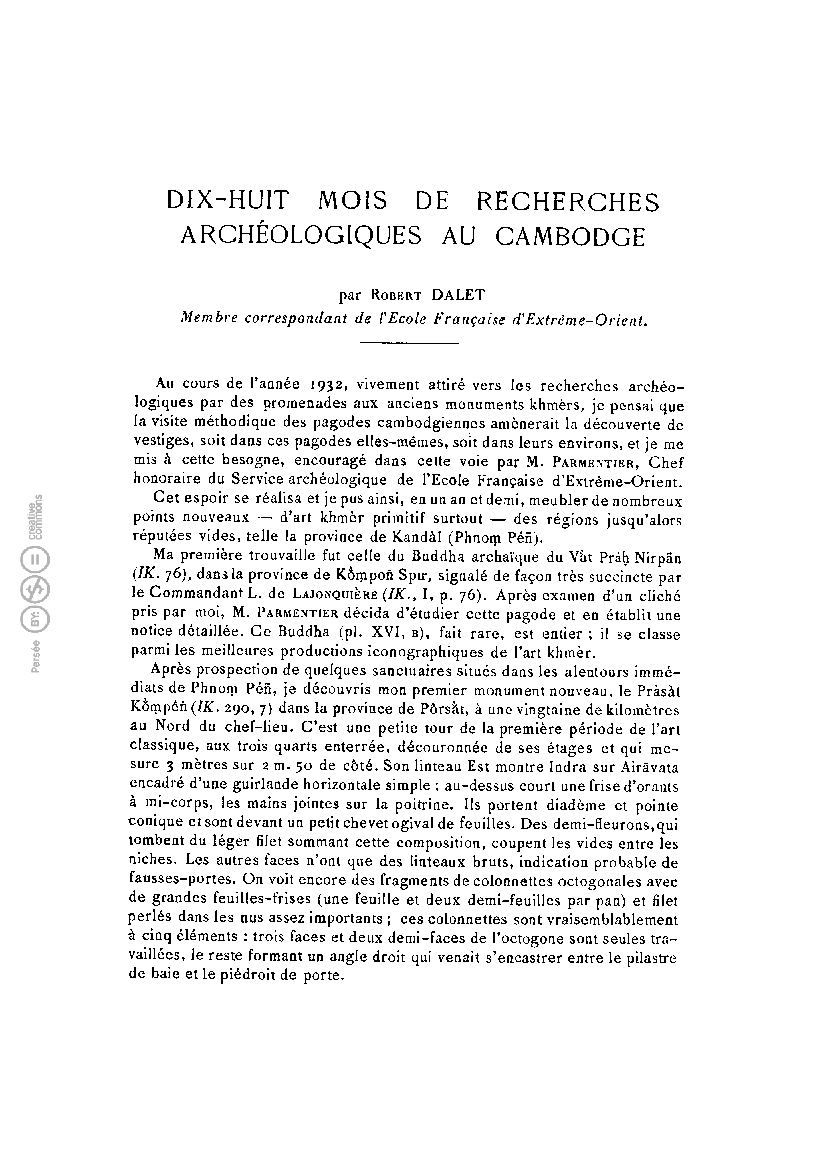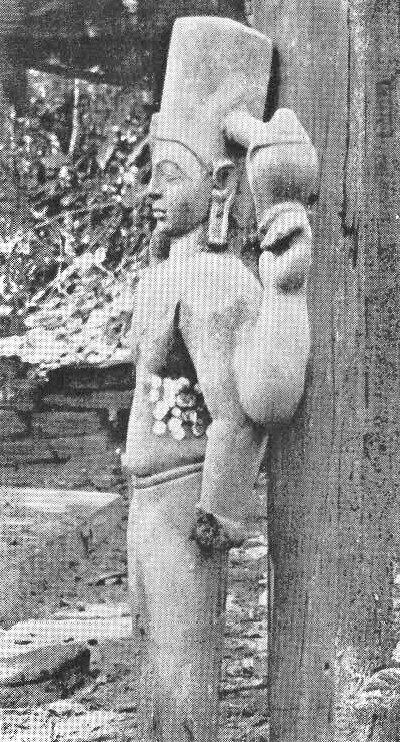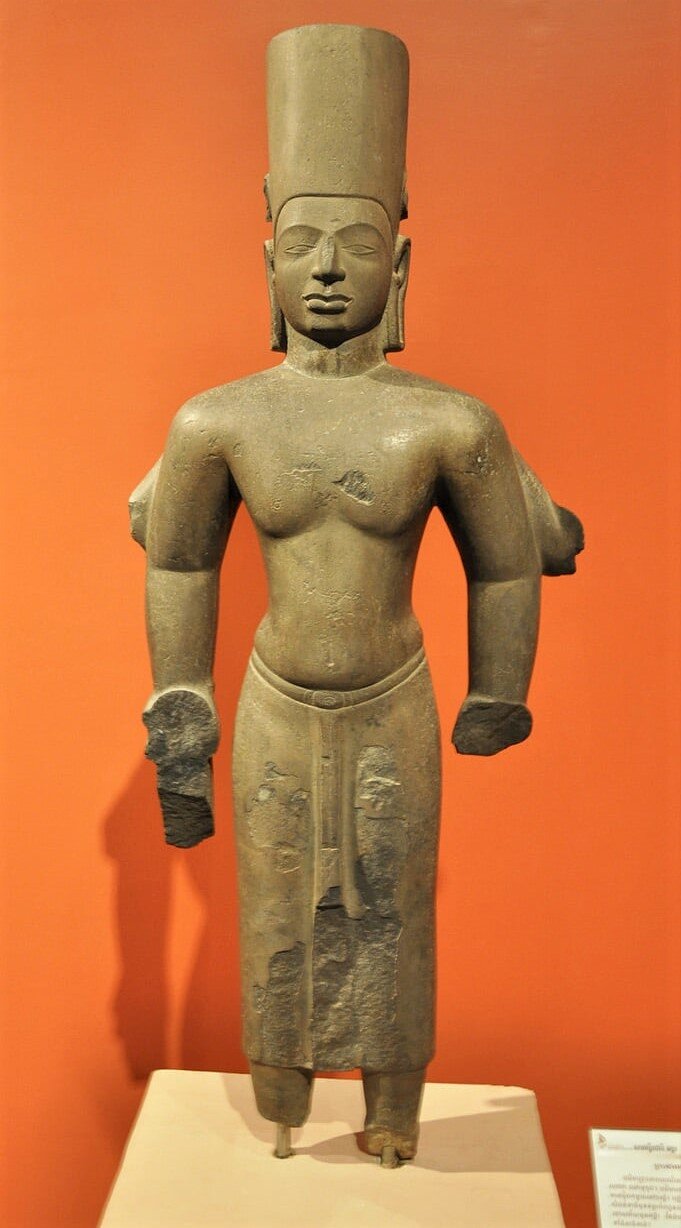Dix-huit mois de recherches archéologiques au Cambodge | Archaelogical Research, a 18-month campaign in Cambodia
by Robert Dalet
Far from Angkor, an archeological journey through Cambodia that led to many important discoveries in the 1930s
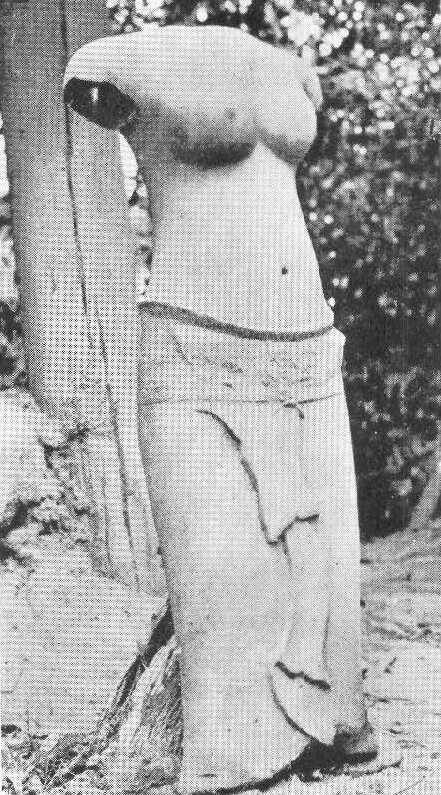
Publication: Bulletin de l'Ecole française d'Extrême-Orient, T. 35, pp. 117-145.
Published: 1935
Author: Robert Dalet
Pages: 33
DOI: doi: https://doi.org/10.3406/befeo.1935.3940 | www.persee.fr/doc
Language : French
pdf 16.6 MB
In 1932, the author, an EFEO “unpaid correspondent” (according to Louis Malleret), embarked in a solitary expedition through the Kandal and Kompong Speu provinces to the South, then to the North through Kompong Thom and Kompong Chhnang provinces, looking for remains of pre-Angkorean and classical-era sculptures and architectural elements.
His quest led to many important finds, detailed in this study in the lively yet accurate style of an art lover, far from the usual format of dry archaelogical reports. In pagodas and in natural sites that he sometimes excavated, he found sculptures, lintels, inscriptions that helped to a better understanding of the pre-Angkorean and Angkorean art and civilization.
In spite of being a true erudite perfectly able to analyze history and style, the author seems above all enthralled by the excitement of exploration, leaving to experts he names in his travelogue (H. Parmentier, G. Groslier, G. Coedès…) some further interpretation of his findings.
Tribulations of a statue
In Plate XV, the author presents the “remarkable Visnu of primitive art from Srah Práh That [Srah Preah Theat] (IK. 27, 2), Kompong Speu province.” He adds: “Cette statue a malheureusement été décapitée après mon passage et la tête volée pour être vendue ; le pilleur fut découvert, condamné, la tête reprise, mais la pièce n’en reste pas moins mutilée.” [Unfortunaley, this statue has been beheaded after my visit, the head stolen and sold; the looter was caught and sentenced, the head recovered, yet the piece remains mutilated.”
In the vast Survey of Khmer Art Collections he started in 2020, researcher Andy Brouwer found that the beautiful 115 cm-high statue, with its head back but its two upper arms still missing, entered the National Museum (then Musée Albert Sarraut) with the numbering Ka. 1784 in the 1930s, and was transferred to the Angkor National Museum (Siem Reap) in 2007. [Photo 1 by Robert Dalet, Photo 2 by Richard Mortel]
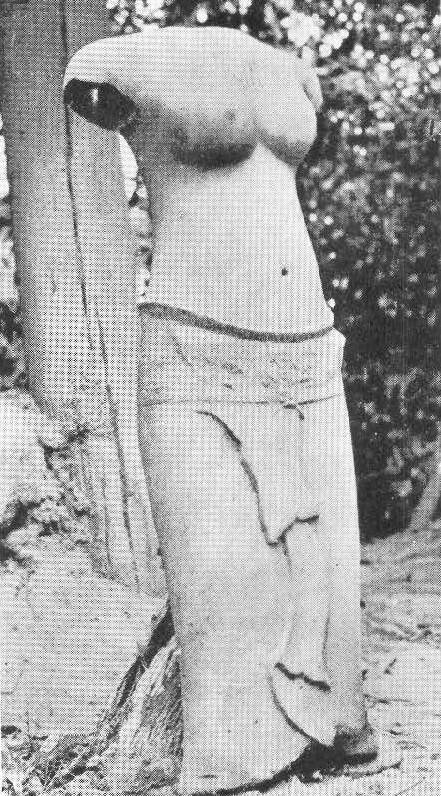
Photo: A statue found by Dalet in Kandal Province, photographed and described by himself as follows: “Une idole féminine, tête, bras et pieds disparus, avec un très bon mouvement du corps, faisant partie d’un пак ta du Vât Teuk Thlà (IK. 74, 8), province de Kandàl, oeuvre de la première période de l’art classique. Le sarong, à rayures verticales, s’évase légèrement en haut, surtout sur le devant; une forte besace, rayée aussi, est presque complètement brisée et un double pan, terminé en accolade, ondule au-dessous de la ceinture. Celle-ci, attachée immédiatement sous la besace par un petit nœud en corde, montre deux rangs d’ovales; les seins, bien modelés, ont leur pointe peu marquée. La hauteur de cette statue est de 80 centimètres.” [A female idol, head, arms and legs gone, with a beautiful body motion, part of one nak ta at Wat Teuk Thla (IK.74,8), Kandal Province, from the first period of the classical period. The vertical-striped sarong is slightly flaring at the top, especially the front part; a sturdy knapsack, also with stripes, is almost completely broken and a double fold ending in accolade ripples beneath the belt. The belt, secured right under the knapsack with a small rope knot, shows two rows of ovals. The well-shaped breasts have slight peaks. The statue is 80 cm high.]
It is interesting to note that
- Dalet didn’t attempt to associate this statue with a definite female deity such as Uma or Laksmi;
- we have been unable so far to trace the whereabouts of the statue;
- approximately at the same time, around 1936, Henri Marchal found at Bakong site (Roluos) a group statue identified as the Umagangapatisvara, the Shivaite triad composed of Uma at the left side, a male deity at the center and Ganga at the right.

The style and size (107 cm) of the ‘Parvati/Uma’ is definitely close to Dalet’s mysterious female figure. Was the latter part of a “triad”, too? In her essay “A note on a disputed Khmer sculpture of three figures from the Bàkoṅ known as the Lord Umāgaṅgāpatīśvara” (Asianart.com, Nov 2005) Annette L. Heitmann supports the idea that the two ‘goddesses’ had initially a hand resting on each tigh of the Shiva in this “voluptuous yet peaceful composition”.
Tags: statuary, archaeology, inscriptions, French explorers, Phnom Da style, Preah Ko style, Bakong, Chenla, Sambor Prei Kuk, Sambor Prei Kuk style
About the Author

Robert Dalet
Robert Dalet was an archaeologist, photographer and explorer who discovered numerous artefacts dating from the pre-Angkorean and classical periods across Cambodia in the 1930s and 1950s.
Briefly mentioned as an EFEO ‘correspondant bénévole’ (unpaid correspondent) by Louis Malleret (and registered as EFEO correspondent in 1934, 1937, 1940, 1943, 1950 and 1953), Dalet nevertheless worked closely with George Groslier, Henri Parmentier and Henri Marchal, and authored the photographs for the Angkor Guide Jeanne Leuba, Parmentier’s widow, published after his death.
His contribution to EFEO documentation of Khmer art and architecture remains impressive: in 2014, Jean-Yves Gresser’s tally of stereoscopic glass plates kept in the EFEO fund for Cambodia attributed 1,431 plates to Dalet, 2,769 to Louis Finot, 119 to Charles Carpeaux, 4,274 to Parmentier and 2,415 to Marchal. And Dalet had also started to use soft film for support.
A maverick who loved to wander through remote provinces and humble pagodas, Dalet played an important role in discovering and sometimes unearthing archaeological pieces related to the Funan and Chenla periods. In Survey of the Southern Provinces of Cambodia in the Pre-Angkor Era, Kuoch Haksrea noted in 1976: “Since 1927 however, when Henri Parmentier published his major work L’Art Khmer Primitif, a certain number of monuments related to this “primitive art” have been discovered, thanks to the systematic explorations of Robert Dalet and Pierre Paris. The amount of material recovered and the numerous sites discovered compelled Parmentier to add a supplement to his 1927 study.”
In his impressive study, L’art architectural hindou dans l’Inde et en Extreme-Orient (p 98), Henri Parmentier credited Robert Dalet with the “discovery in 1932 of the charming group at Kompong Prah, at the entrance of the Great Lake, during one of his productive archaelogical tours.” He also used many photographs by Dalet, including shots in Sri Lanka, Preah Vihear, etc…

